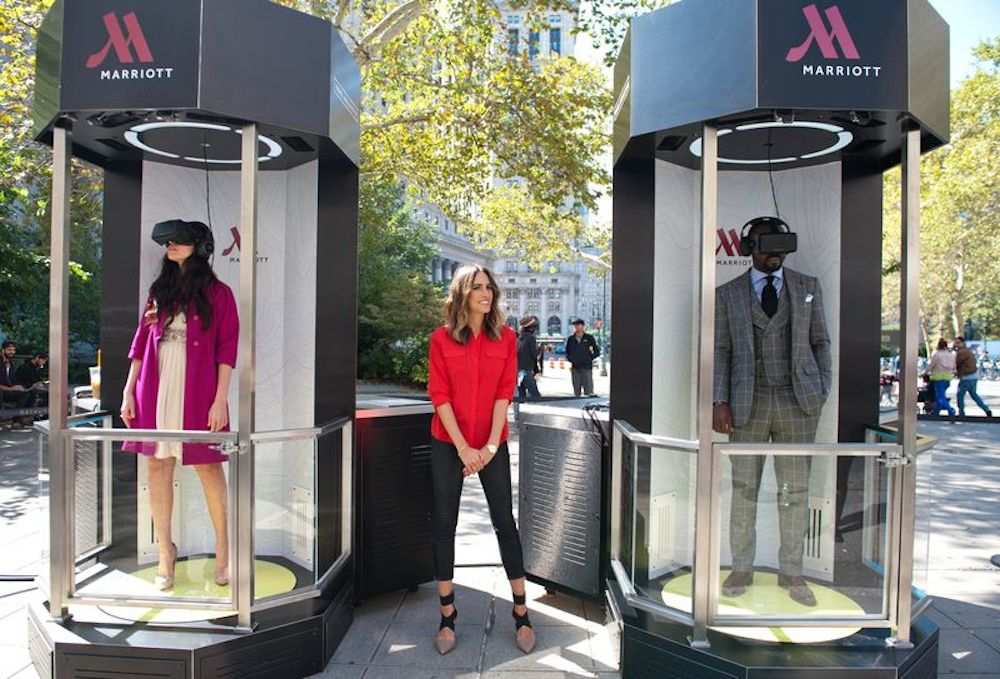Google Cardboard is quickly democratizing VR technology and early advocates – including speakers at ad:tech San Francisco – insist it is much more than a flash-in-the-pan toy. That’s because it delivers experiences they describe with words like “magical” and “breathtaking.” And these are experiences transport consumers away from reality and to an almost childlike place with strong emotional connections, they say.
That, in turn, translates to huge opportunities for brands once the technology reaches critical mass. So how close are we to that point? And what does that mean for marketers?
Discovering VR
Craig Dalton, CEO of device case manufacturer Dodocase, which makes a pop-up VR user, likens a consumer’s first experience with VR to “the first time looking through a telescope” when he or she experiences “incredible joy and awe.”
And, Dalton notes, if a brand/marketer “is delivering a smile to a human being, it’s a priceless opportunity.”
Further, Dan Ferguson, director of digital interactive at design, visual effects, animation and entertainment studio Reel FX, says visual content is “not that impactful when it’s on a rectangle on the wall, but when you put on a headset that is hooked up to an expensive device, it’s extremely magical.”
“That guttural reaction that people have – as soon as they see it, they know it’s something special and important,” he adds. “When you can film something in 360, it transports you. We should be recording our lives like this. I could go back in time and see my family at various stages of [our] lives and feel like [I’m] there.”
Moving Closer to Mainstream
And while VR is, in many respects, still a hot new toy, 25 million VR headsets are projected to be in circulation by 2020.
What’s more, Google Cardboard enables smartphone users to easily turn the devices they already own today into VR devices.
“Our message is the 1.7 billion mobile phones out there are VR devices – people just don’t know it yet,” Dalton says.
And, he says, Cardboard is the VR “gateway drug,” because it is so much more accessible than Oculus.
And not only is Google Cardboard on the verge of making VR much more commonplace in consumers’ lives, the technology is simply getting better, which could also be the sign of a tipping point.
For her part, Valerie Carlson, executive creative director at marketing and consulting company SapientNitro, points to a scene in the movie Wild that “gives you the feeling that you are present in the redwoods with Reese Witherspoon and made me feel the quality of the work is better.”
Big Potential
And like the voice in the cornfields in the movie Field of Dreams, now that the technology has been built (and ameliorated), marketers are coming.
In fact, brands like Dell and Chuck E. Cheese have filmed commercials with 360-degree cameras for more immersive content, Ferguson notes.
But there’s even more potential than that for VR to deliver new experiences.
“You have to test and learn and you have to fail,” Carlson says.
In fact, Carlson says SapientNitro has partnered with control platform Sixsense on applications that allow consumers to “grab things in VR, which is more oriented to gaming, but has a piece for retail.”
In other words, someday we might shop in VR.
“It’s about human nature. Everything we do or buy has something to do with connecting with others. And there’s huge potential for connection [with VR], Carlson says. “Right now, e‑commerce is flat. It’s a website and you’re poking buttons and looking at flat images. We don’t create immersive experiences, we can’t replicate the showroom experience…but VR is a true experience [that enables] new realities through immersion.”
According to Carlson, VR can transport consumers to the fashion capitals of the world and she is experimenting with how consumers want to move through spaces in part because brands don’t want to deliver the same consumer experiences they do in brick and mortar locations.
“There is a lot of desire to use existing UI and methods we’re comfortable with. What we’re hoping we can do is use other forms of directional devices and create new ways of moving through spaces,” Carlson says. “If you are in a space and it’s something that is real – a place that already has visual markers, you can try to use sound, music and voiceovers rather than the buttons and arrows in e‑commerce. That alone is a mechanism to better understanding.”
Ferguson points to an experience with Samsung Gear that emulates the browsing/shopping experience and a user’s head becomes the mouse.
For Mitch Gelman, vice president of product at website and media property brand Gannett Digital, VR is about delivering news to a new – read: younger – audience and connecting on that target’s terms in part because VR is “an empathy machine” and allows news organizations to deliver content to users that “feel what they are seeing in ways that do not exist today.”
“It heightens the connection to the story and removes bias with 360-degree views and connects people to news in way that can be fun again,” Gelman says. “This emerging storytelling technology allows us to be better story tellers.”
He points to an interactive experience from the Des Moines Register, Harvest of Change, which “told the story [of a farm] by building a gaming environment and creating drama between older members of the family and whether they were able to pass it down.”
And Dalton points to a project with Elle Magazine in which the brand sent viewers to influencers and worked with a couture designer to film a 360-degree immersive video and give influencers early access to a collaborative collection at an exclusive location in Paris.
“The ability of VR to transport you somewhere you don’t normally have access is critically important,” Dalton says. “You have access to a chateau in Paris you wouldn’t have otherwise.”
For his part, Gelman says VR offers opportunities for product placement, brand association and native advertising within experiences.
In addition, he notes, “For us, we’re a newspaper company seen as cutting-edge,” which appeals to potential advertisers.
But there’s still work to do.
Gelman says brands must take advantage of Cardboard viewers and simplify products, challenge norms and establish best practices.
Dalton agrees the industry needs VR best practices, but it’s a worthwhile investment. Potential is huge because most consumers will at least eventually end up with a Cardboard device as a freebie from a brand, he adds.
Where do you see VR’s marketing potential?


